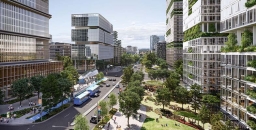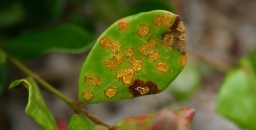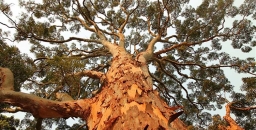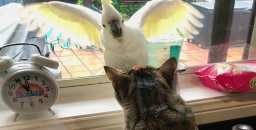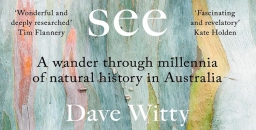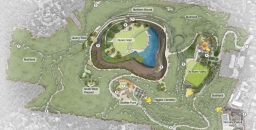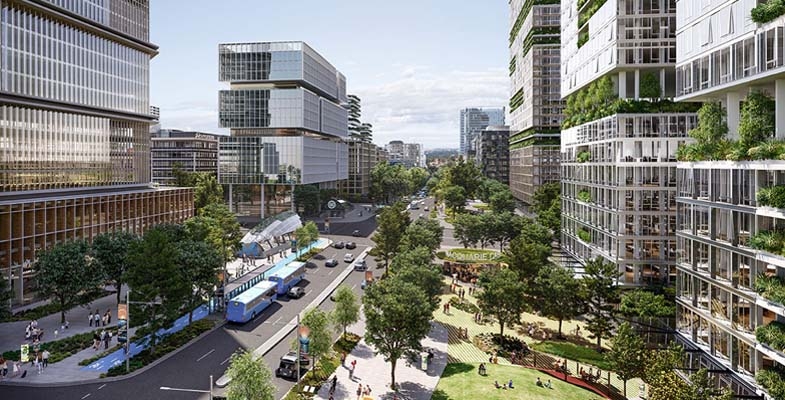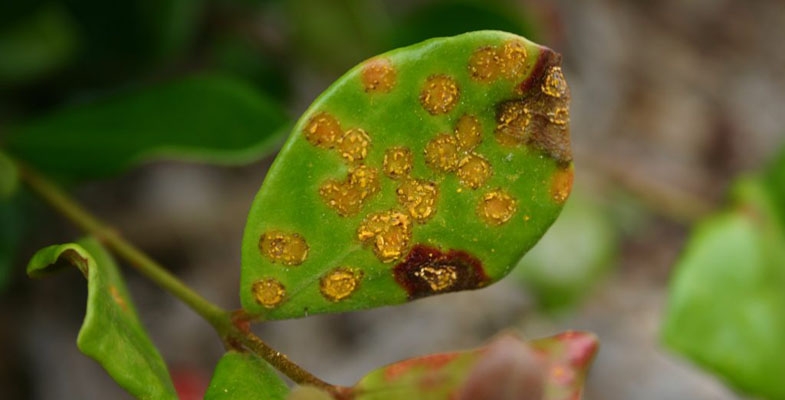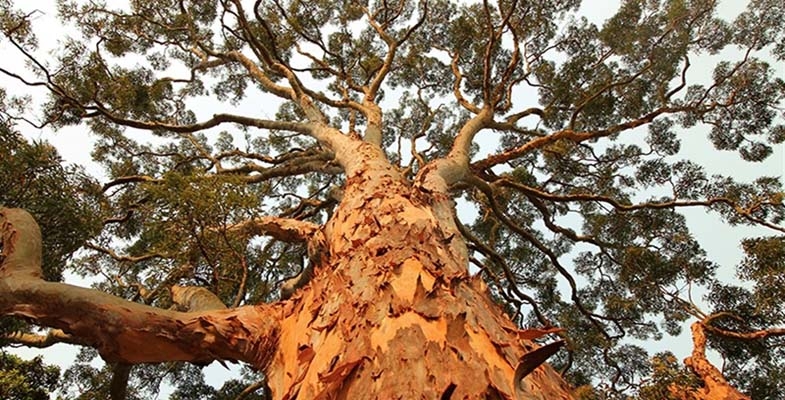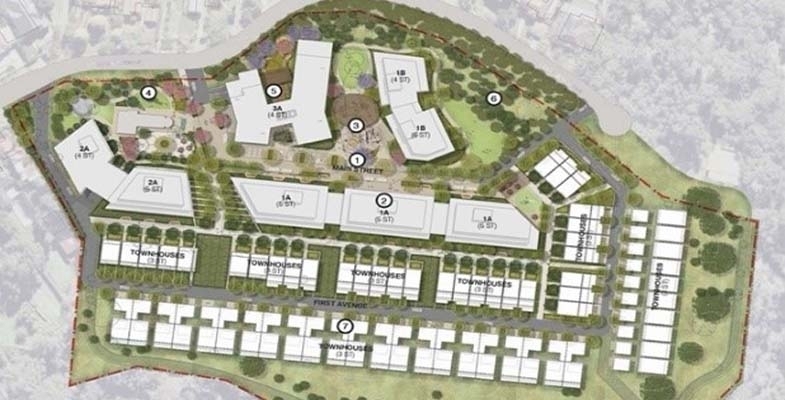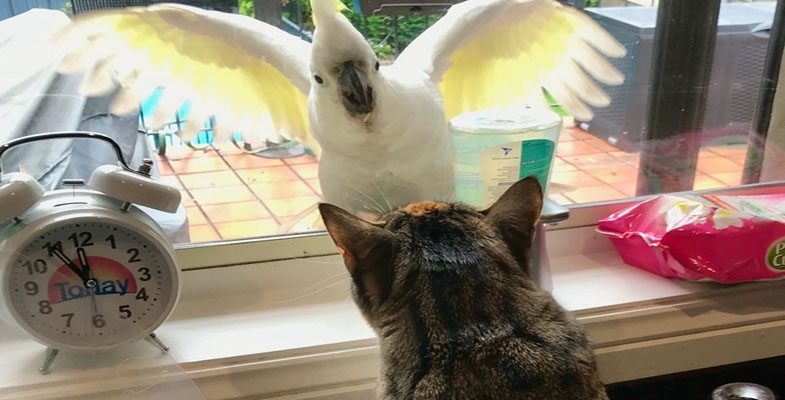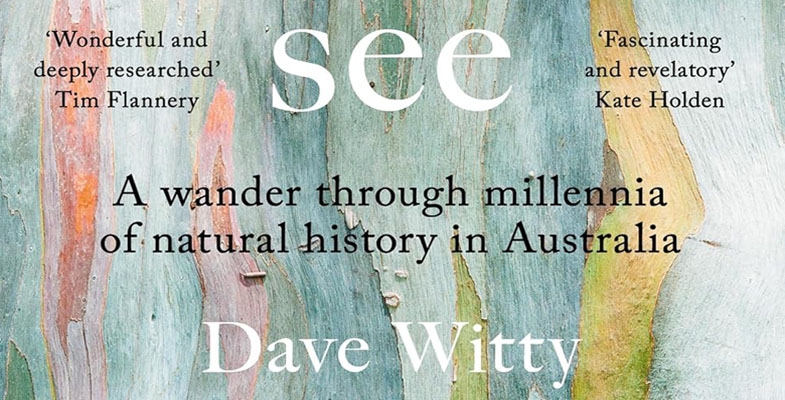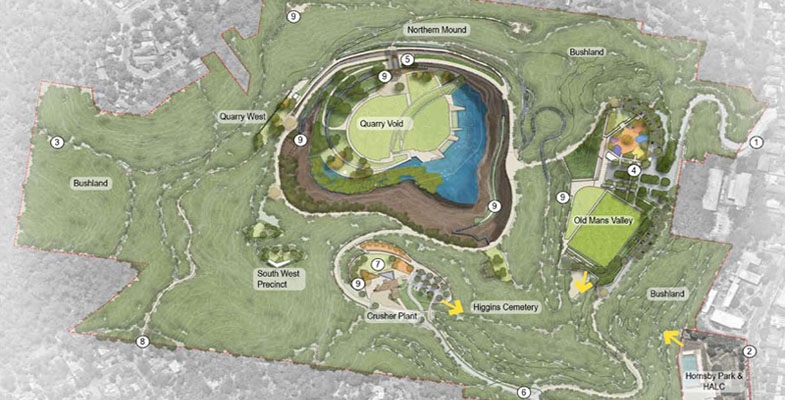STEP Matters 224
- Default
- Title
- Date
- Random
- In December, just as we were looking forward to a peaceful holiday break, the NSW government released plans for new…Read More
- Myrtle rust is an invasive species of fungus that threatens plants in the Myrtaceae family. Researchers want to know more…Read More
- According to 2020 data Ku-ring-gai currently has an urban forest canopy cover of 45%. The Urban Forest Strategy is to…Read More
- A planning proposal for the redevelopment of the Lourdes Retirement Village at the end of Stanhope Road in Killara was…Read More
- Domestic cats and dogs pose a serious threat to wildlife because of their natural hunting instincts. With a large number…Read More
- The Ku-ring-gai Bushcare Association (KBA) came up with the idea to run a competition to encourage cat owners to keep…Read More
- This book is delightfully easy to read but not so easy to review in a limited space as it moves…Read More
- Hornsby Council is making good progress on the development of the Hornsby Park and Quarry site with works almost completed…Read More
Government plans to increase housing density are roundly condemned
In December, just as we were looking forward to a peaceful holiday break, the NSW government released plans for new policies aimed at increasing housing density to cater for the massive increase in demand brought about by recent and projected high levels of immigration. We all understand the need to boost housing supply in the right areas to avoid adding to the existing suburban sprawl but the way the government is going about it is totally unacceptable.
The explanatory document, the Explanation of Intended Effects: Changes to Create Low- and Mid-rise Housing (the EIE), makes some grandiose statements. It claims that:
The changes will give NSW households more choice and promote vibrant, sustainable and liveable communities …. Our longer term aim is to enable better planning that is led locally.
This all plain spin.
The reality is that a new planning system is being imposed without opportunities for local input. Council local environment plans (LEPs) and controls will be overridden by ‘non-refusal standards’ determined on a one-size-fits-all basis.
The headline description of the new housing typology is that they will be well-located and well-designed. However, the standards in most of the redevelopments will create housing that leaves only room for a small or medium size tree in a small garden. Existing mature tree canopy will be severely reduced so all the government rhetoric about creating ‘liveable’ communities in the face of climate change will become meaningless. These mature trees and their environmental benefits cannot be replaced.
The EIE applies to the Six Cities Region that covers the Illawarra, Blue Mountains, Sydney and Newcastle and lower Hunter with the exception of dual occupancy provisions that apply to the whole state.
Transport Oriented Development (TOD)
Another announcement was made in December that has potentially drastic implications for the established suburbs of Gordon, Killara, Lindfield and Roseville. No consultation with the public is to occur and Ku-ring-gai Council has had limited opportunity to have their say to the Department of Planning. This development standard is to be implemented from 1 April. More detail is further on in this article.
When will this all happen?
First of all the government has to finalise the new State Environment Planning Policy (SEPP) that governs the implementation of the policy. The intended effective date is mid-2024. So time is tight.
The government did invite feedback from the public, councils and stakeholder bodies. This is currently being considered and a response will be published. Whether they will modify the policy to recognise the outpouring of criticism remains to be seen.
The intention is to ‘fast-track’ the new housing plans so it is likely that the problematic complying development process with private certifiers will be used. In 2022 only 48,000 new homes were completed in NSW. The goal of this new policy is to build 75,000 new homes over each of the next 5 years in accordance with the new housing accord agreed between the states and federal governments.
How will it happen?
That is the big question that will determine whether the intended large increase in the number of dwellings does actually occur. It appears that developers will be knocking on doors with generous offers to buy people’s houses. Alternatively landowners will put their place on the market. The take-up response is unknown so the outcome is unpredictable.
The normal process is for councils to be given new housing targets over a wide time frame and they then carry out strategic analysis and community consultation to identify where the increases should occur by rezoning areas for higher density housing development. Controls are defined taking into account local conditions such as existing infrastructure, topography, local character and heritage, biodiversity protection and bushfire risk. They aim to avoid issues like overshadowing and increased stormwater flood risk. This provides certainty for all parties that enabled long-term planning.
Non-refusal standards
This time the state government proposes new ‘non-refusal’ standards – if types of development are compliant with such a standard, they cannot be refused. As these are to be implemented under a SEPP, they can overrule LEPs or Development Control Plans. These standards are outlined in the EIE.
In recent budget estimates hearings the Minister for Planning claimed that councils will retain their powers to control development. Yes okay, but only if the council controls are similar to or more permissive than the non-refusal standards in terms of the housing outcomes. This is obviously unlikely.
The implementation of the EIE is undermining the government’s own existing statutory strategic planning framework that coordinates new housing plans. The government is working on new regional and district plans to be released in 2024 that should inform local council plans. In June 2023 the government abolished the Greater Cities Commission that had the role of determining these plans. This function has been brought back to the Department of Planning. So currently we do not have a holistic plan allocating when and where the increased housing numbers should go together with the associated infrastructure needs.
Higher density standards
There are three types of higher density housing that are to be implemented:
- dual occupancy in R2 (low density) residential areas
- low-rise housing in R2 zones within 800 m of railway stations and local centres
- mid-rise housing in R3 (medium density) zones within 400 m of railway stations and local centres
1. Dual occupancy in all low density (R2) zones in the whole of NSW
This change may have the most significant impact in the character of our cities and towns. Currently many councils do not allow dual occupancy in R2 zones. This includes Hornsby and Ku-ring-gai. If this option is taken up by many landowners then the tree canopy cover of all our suburban areas will reduce significantly.
Under the non-refusal standards, any block that is at least 450 m2 could be converted to dual occupancy. Another house can be added to the existing one on the block or an existing house can be knocked down and replaced with two houses. Larger blocks that are common in northern Sydney of over 900 m2could be sub-divided into two blocks and then two dual occupancies could be built – four houses in all. Currently the local trend is to knock down established houses and replace them with a much bigger single house. Will this trend continue as well?
In either case established tall trees and gardens are being cleared and replaced with smaller trees and hedges that will be of limited value for cooling the environment and providing habitat for wildlife. The EIE prescribes a minimum number of trees be planted depending on the size of the block but they only need to be a small tree (5 to 8 m – bottlebrush size) for a medium size block and medium tree (8 to 12 m – jacaranda size) for a larger block of over 600 m2.
2. Low-rise housing close to local centres
Low-rise housing as defined in the EIE is to be permitted in R2 zones within 800 m of railway stations and local centres (zoned E1). The definition of local centre is up for discussion. It is intended to apply to places with a good range of services such as a full-sized supermarket and restaurants. In our area it would apply to St Ives. It is also intended to apply to centres with good access to public transport. St Ives has poor public transport and frequent traffic congestion.
Low-rise housing will include:
- manor houses – two-storey flat building – can be four or more flats depending on land area
- terraces – row of dwellings
- townhouses or villas – multi dwelling housing

Manor houses
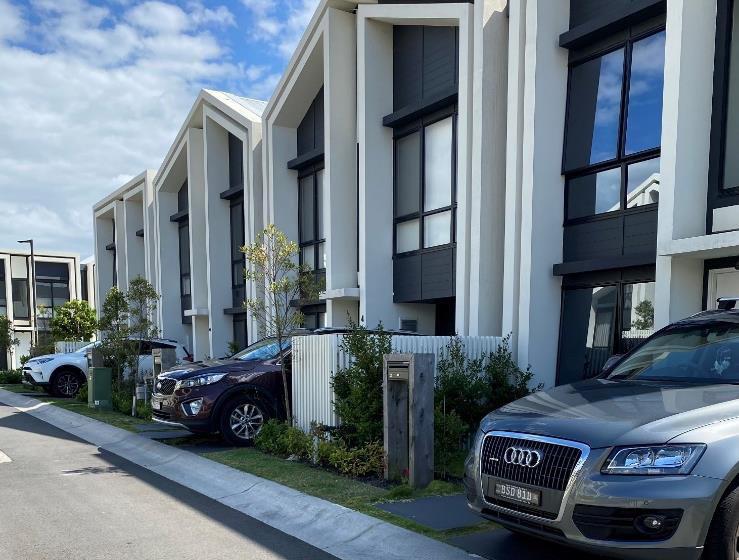
Terrace
The specifications for maximum floor space ratio and minimum site area will mean that the space remaining for gardens and trees will be very limited. The minimum tree canopy target for larger blocks is 30% assuming the trees will reach maturity compared with the current guideline of 40%.
The greater density will increase the need for car access. This means more driveways with less space for street trees.
It appears that sub-division will be encouraged so that the normal sized lot in the northern Sydney area could be sub-divided and replaced with two or three low-rise developments.
3. Mid-rise housing
Mid-rise housing is to be permitted in E1 (local centres) and R3 (medium density) zones within 800 m of railway stations and local centres. This is defined at residential flat buildings or shop-top housing. The maximum height allows for building up to six to seven storeys (maximum height 21 m) within 400 m of the station or town centre and up to four to five storeys (maximum height 16 m) in the 400 to 800 m radius.
Developers can add extra floor space if affordable housing is included. If 10 to 15% of the gross floor area is allocated to affordable housing then the height can be increased by 20 to 30% respectively. This means a six to seven storey building can be increased to eight to nine storeys.
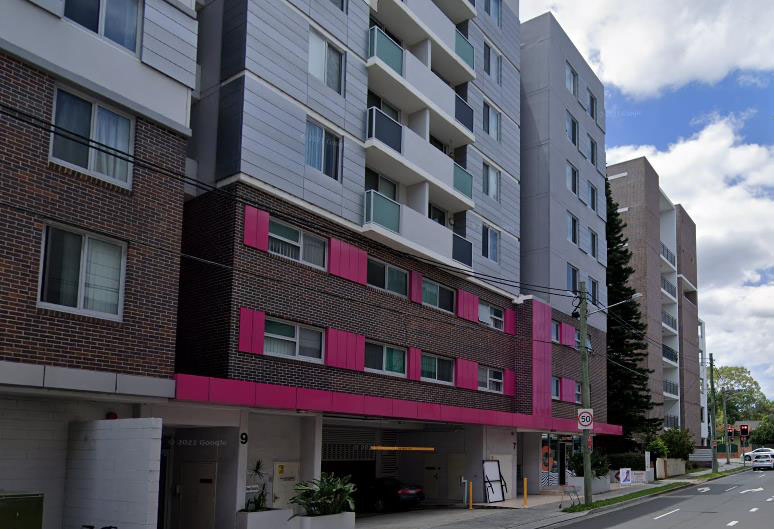
Mid-rise housing
Transport oriented development
Four station areas, Gordon, Killara, Lindfield and Roseville have been identified as places appropriate for Transport Oriented Development (TOD); 31 areas in total have been identified for the TOD in the Six Cities Region. This Imposes mid-rise housing (six to seven storeys) within 400 m of these stations to be applied to all residential areas. Some of these areas already have higher rise development but the majority of areas are low density. Not only that, but 40% of these areas have a concentration of heritage housing.
The minister claims that the non-refusal standards can be avoided if Ku-ring-gai Council does their own strategic assessment and works out planning controls that will enable the new housing numbers to be accommodated before the TOD requirements are implemented. But they come into effect on 1 April and the government advice on the expectation of new dwellings has not been provided.
The government proposals have been roundly condemned
There is a long list of problems with the government’s denser housing proposals. Ku-ring-gai Council’s website contains their lengthy detailed submissions. On 3 February an extraordinary meeting passed a resolution that:
- Condemns the State Government for its irresponsible approach to planning for the future of the built and natural environment in
- Rejects the proposed changes to planning controls and demands that they be withdrawn with genuine consultation to be undertaken with councils and their communities, as intended by the National Housing Accord 2022.
Brief summary of issues
The proposals basically do not conform with the Environment Planning and Assessment Act and the principles of ecologically sustainable development.
Ku-ring-gai Council’s analysis of the higher-density development configurations for mid-rise housing shows do not even conform with the government’s own SEPP 65 Design Quality of Residential Apartment Development.
Government claims that there will continue to be opportunity for genuine merit assessment of developments, taking into account local character, biodiversity and heritage matters are meaningless. As currently announced the two SEPPs will apply a top-down one-size-fits-all approach.
The landscaping and building parameters prescribed in the non-refusal standards are not suitable for established suburbs. The planning system must continue to allow the consideration of issues such as consistency with existing built form, tree canopy targets, topography, bushfire risk with the need for asset protection zones and stormwater management.
As announced, development types will be determined by the developer resulting in a mishmash of housing styles throughout Sydney particularly in the areas near stations and local centres.
The mid-rise development of up to seven storeys near railway stations along the Pacific Highway from Roseville through to Wahroonga is very concerning. This will create a wide strip of development about 1 km wide that will be a barrier for wildlife movement between north to south bushland. The land falls away sharply on the southern side of the highway where the impact of the ridge barrier will be emphasised. These areas retain the seedbank and soils that are essential for the survival of the last remaining areas of remnant critically endangered forests.
Councils must be able to limit the amount of clearing on properties when additional dwellings are added so that mature trees are retained. The blanket dual occupancy approval provisions must not proceed.
The two proposals for ‘transport-oriented development’ and ‘low and mid-rise housing’ together endanger more than 4,000 heritage properties (items and sites within heritage conservation areas).
Help tackle the spread of myrtle rust
Myrtle rust is an invasive species of fungus that threatens plants in the Myrtaceae family. Researchers want to know more about the extent of the problem, and they are asking for public help.
Alyssa Martino, a PhD student at the University of Sydney who is studying myrtle rust infection and leads the iNaturalist Gum Tree Guardians project says reports of myrtle rust will give the team a broader understanding of the extent of the disease.
If you see some myrtle rust please upload photos using the iNaturalist app and provide other information such as the species of the host plant, age of the plant and how much it and other nearby plants are affected.
Calls for stronger tree protection measures
According to 2020 data Ku-ring-gai currently has an urban forest canopy cover of 45%. The Urban Forest Strategy is to increase this to 49% by 2036. However the level of canopy cover is going the wrong way and there is increasing community concern about tree destruction, both legal and illegal.
In recent months there have been some extreme examples of tree destruction in Middle Cove (over 250 trees) and Longueville (about 300 trees and shrubs). There are many examples of trees being removed in order to ‘improve’ views or increase property value as the size of a home rebuild is increased.
There is some dispute about the level of canopy loss. Council’s measures are that 1.4% of canopy has been lost over the two years to 2022. An article in the Sydney Morning Herald quoted data from a study compiled by consultancy group ArborCarbon for the state government and analysed by the Western Sydney Leadership Dialogue. This claimed that the Ku-ring-gai had lost 8.2% between 2019 and 2022. The discrepancy is so large that the baseline or methodology needs to be examined.
The article stated that, altogether, Greater Sydney’s tree canopy barely changed; trees covered 21% per cent of the city in 2019 and, in 2022, cover was 21.7%. That’s a long way off from the government’s target of 40% coverage by 2036. That target will totally unachievable if the housing proposals go ahead as announced (see previous article). A large proportion of the increase needs to occur on private land. Only so many trees can be planted along streets and in parks.
Responses by local councils
Several local councils presented motions to the local government conference in November 2023 calling for increases in penalties for tree vandalism and illegal removal. The motion passed called on Local Government NSW to:
- Urgently undertake a review of the legislative regime for tree protection and seek increased penalties and deterrents, including significantly increased fines and community service for the destruction and vandalism of trees in NSW. The review is to include the destruction and vandalism of vegetation in environmentally sensitive areas such as riparian zones, areas of high biodiversity value and foreshore protection areas. The review should identify opportunities to better coordinate tree protection across NSW, along with improved education and awareness around the importance of tree protection to build stronger community support.
- Advocate for effective reform to improve collaboration and coordination in education and enforcement to combat tree vandalism in NSW.
Upper house petition – please sign
The Legislative Assembly of the NSW parliament has put up a petition calling on the government to significantly increase penalties for urban forest tree vandalism. It also calls for the recognition of trees as 'natural assets' in the Integrated Planning and Reporting framework of the Local Government Act.
Click here to sign the petition.
The preamble to the petition explains that councils lack resources for thorough criminal investigations, hindering effective prosecution. Despite the illegality of tree vandalism under the Environmental Planning and Assessment Act, only 19 cases were prosecuted from 2018 to 2022.
The petition also asks the Legislative Assembly to call on the government to amend the NSW Local Government Act to include trees in councils' asset registers as 'natural assets', allocate a budget for a collaboration of councils to undertake pilot projects to integrate natural capital/asset reporting in balance sheets and develop natural asset data capture and management standards. Recognising trees as 'natural assets' helps us appreciate their true value including their role in combating climate change and preserving biodiversity.
What’s Ku-ring-gai doing?
1. Strengthened tree regulations
Council is now enforcing strengthened tree regulations.
Residents who breach the conditions of their DA or Complying Development Certificate through illegal tree removal, will be required to replace them with a like tree in addition to fines. Residents undertaking works on their land should expect to be monitored and conditions enforced in accordance with their development approval.
2. Illegal Tree Removal Community Forum
Tuesday 26 March, 6 to 8pm
Ku-ring-gai Council Chambers,
818 Pacific Highway, Gordon
This text comes from council’s website.
Council invites all community members and groups to a public forum addressing the critical issue of illegal tree removal in our neighbourhoods. This growing problem threatens our tree canopy - an invaluable community asset we must protect.
We will discuss the challenges faced in curbing the threat, as well as potential solutions. Most importantly, we seek to hear from you - the community - regarding your insights into the problems and opportunities before us. What actions can we take together to protect our trees and urban forest?
The session will concentrate on three crucial aspects:
- the primary obstacles in sustaining and enhancing our tree canopy
- compliance and regulation – measures that can be taken to prevent or remedy tree removal
- education – discouraging people from wanting to remove trees
By registering now, you can share your views in advance of the forum. This will aid in guiding the forum discussion by addressing questions on the above topics in the registration form.
This is a call to all who care about saving our trees to get involved. Join the forum and make your voice heard in developing community-driven strategies to turn the tide on illegal tree loss in Ku-ring-gai.
3. TreeCare
A group of concerned citizens has been working with some of the councillors and staff on ways to ensure that our iconic trees are cared for. The plan is to set up a TreeCare group that will install protection measures such as and information signs around significant trees on public land. The angophora at the edge of the car park at the St Ives Showground has been suggested as the first site.
4. Tree Watch
A new community action group has been formed called the Voices of Ku-ring-gai with goals of lifting the standard of integrity, environmental protection, transparency, accountability, and community-mindedness of Ku-ring-gai Council.
One of their first initiatives is to set up a scheme called Tree Watch. Community members who opt into Tree Watch can download a poster for their community notice board or place a plaque on their fence or gate. This alerts the neighbourhood to the fact that the person who lives there places a high value on the precious and sensitive ecosystem in the neighbourhood.
The group will share information about tree losses and how to report to council if someone spots tree loppers in action and council’s website shows that the tree removal has not been approved. However, their main objective is to educate the community about the benefits provided by maintaining our tree canopy.
Lourdes development application is refused
A planning proposal for the redevelopment of the Lourdes Retirement Village at the end of Stanhope Road in Killara was first submitted in February 2018. The proposal was to rezone the site from R2 low density to R3 medium density residential. The proponent also sought to amend the usual R3 maximum building heights to heights ranging from 9.5 to 22 m; and amend the maximum FSR from 0.3:1 to 0.75:1 under Ku-ring-gai LEP 2015.
The key objective of the planning proposal was to facilitate the redevelopment of the site to increase the number of dwellings for seniors housing and make improvements to the current facilities that are very rundown.
Ku-ring-gai Council refused the application mainly on the grounds of bushfire risk and its inappropriate location for the planned expansion of seniors housing including a building six to seven stories. Therefore the application had to go through the Sydney North Planning Panel (SNPP).
The proposal was reviewed by the SNPP and progressed into the gateway determination process in November 2018. The Department of Planning then engaged in discussions with the proponent, Levande, aimed at addressing some of the concerns about the project. In May 2022 the department made a gateway determination that the planning proposal could proceed to the development application stage subject to a long list of required amendments and consultation with authorities and public exhibition. These were to be submitted to the department for review and endorsement prior to public exhibition in September 2022. Finally, prior to the final panel hearing, further amendments were made including a change to zoning of the site to include a strip of C2 land (environment conservation) and updates on reports.
Throughout this prolonged process Ku-ring-gai Council has pointed out shortcomings in the plans particularly in relation to bushfire risk. They disagreed with the consultant’s statements that the site has low fire risk and that satisfactory protection measures can be engineered during the detailed DA stage.
These statements were effectively endorsed by the RFS without any independent review. The RFS did not explain the basis for their support and did not object to the plans stating that issues could be sorted out in the DA stage.
The protection measures involved the construction of townhouses that would act as a special fire protection facility. In other words, a buffer protecting the high rise part of the site that would be an aged-care facility. However, the purchasers of these townhouses could have the same dependency and accessibility issues as the residents of the aged-care component of the site.
The final SNPP hearing occurred in December. Many residents of Lourdes and members of community groups including FOKE and STEP presented to the hearing. Ku-ring-gai Council made a detailed presentation criticising the bushfire reports and many other aspects of the project plans and consultants’ reports.
We were all relieved when the panel decided to reject the proposal unanimously and requested that the previous decision to agree to the gateway determination to amend the LEP no longer proceed.
The SNPP reason for their decision was primarily that the solution for bushfire risk was not appropriate. They did acknowledge that the site provided desirable facilities and needed to be upgraded and made some suggestions of alterations that could improve the planning outcome.
This is not the absolute end to the proposal. The minister makes the final decision about what happens next.
Domestic cats and dogs pose a serious threat to wildlife
Domestic cats and dogs pose a serious threat to wildlife because of their natural hunting instincts. With a large number of unowned (stray and feral) and free-roaming cats and dogs, it’s important to manage domestic pets to minimise the damage that can be done to other, more vulnerable species.
It’s difficult to estimate the impact domestic cats have on wildlife, however studies suggest a suburban domestic cat can kill and bring home anywhere from 5 to 30 native and non-native animals each year.
Pet owners should:
- keep cats inside, even if it’s just at night when native animals are most active
- keep dogs inside at night, or confined to a secure space on the property
- provide a safe environment for wildlife in their garden and encourage a wildlife-friendly backyard
- identify pets with a collar, tag or microchip
- add collar bells for cats
- de-sex their pets
If a pet brings in an animal, if possible take it straight to a vet. The saliva of dogs and especially cats, contains bacteria that is toxic to wildlife. It is known amongst WIRES carers and rescuers that animals bitten by a cat or a dog have a small window (usually a few hours) where antibiotics must be administered, or the animal is unlikely to make it.
Lizards such as Blue-tongues often reside in backyards and can have around 15 gardens within their territory. It is likely the lizard has lived in the area for some time and is adept at avoiding hazards such as cats and dogs. However the rescue office receives a large number of calls for Blue-tongued Lizards who have sustained injuries such as puncture wounds or broken backs from domestic animal attacks.
This article has been contributed by Andrew Little. It is a transcript of presenter notes by Jess Styan, WIRES Rescue and Care of Wildlife on the North Shore, as part of WildThings NSW Forum on Sunday 15 October 2023.
Initiative to keep cats safe at home
The Ku-ring-gai Bushcare Association (KBA) came up with the idea to run a competition to encourage cat owners to keep their cats inside and protect wildlife. Residents were provided with information about the risks to wildlife and cats if they are allowed to roam outside. They were invited to submit photos of their cat safely inside and have a chance to win a $500 voucher to install cat enclosures for their pets. Over 130 entries were submitted so it was a difficult task to select the winners.
The competition was funded through an Environmental Levy Grant and was a partnership between Ku-ring-gai Council, Catnets and KBA.
The KBA was established in 1994 to represent bushcare, streetcare and parkcare volunteers at Ku-ring-gai Council. The KBA committee meets monthly with council to provide input into native vegetation management issues and assist with organisation of activities such as convenor forums.
Book review: What the trees see: A wander through millennia of natural history in Australia
This book is delightfully easy to read but not so easy to review in a limited space as it moves widely from topic to topic despite being embraced by a common theme, being Australia’s incredibly diverse tree flora and the human interaction and exploitation both pre- and post-European occupation.
An early chapter captured and intrigued me right away because we lived in Perth for nine years, and he writes through the eyes of a First Nations woman as she traversed Perth's original landscape with its native trees, now changed largely beyond recognition. But the portion of that chapter that deals with Rottnest Island was an eye opener for us who visited the island regularly and actually had our honeymoon there. The brutal incarceration of Aboriginal prisoners and the gradual destruction and thinning of the native flora meant that what we saw on visiting bore little resemblance to its original state.
One chapter features the Leichhardt Tree Nauclea orientalis, a member of Rubiaceae or the coffee family. The so-named tree in Mackay is probably 200 years old and has survived incredible danger and destructive forces like tropical cyclones, has lost all its neighbouring companion flora, but has survived the destructive fate of so many native trees. So-named because it was encountered and recorded by explorer Ludwig Leichhardt, the author highlights its cosmopolitan distribution in the south-west Pacific and its recognition by Melanesian islanders of the Kanaka slave trade as a reminder of home. But of course it was also part of the largely lost native flora of the Yuwibara First Nations inhabitants of the Mackay region and part of its rich history.
The previous paragraph was a brief 10 pages, illuminating and dense with information, but numerous other chapters follow comparable themes with diverse species and settings. For example, having worked inland and encountered isolated palm groves – oases in the middle of nowhere – I was fascinated to learn of the possibility that these had been brought south by First Nations travellers from closely related tropical palm groves, and had only modestly diversified and evolved to fit their new homes.
He touches a number of times on the huge diversity of eucalypt species, highlighting Dean Nicolle’s Currency Creek ‘tree museum’ in South Australia. He intertwines this with Murray Bail’s Eucalyptus novel, a story in the vein of that country and western song Wolverton Mountain. Coming from Britain which has only 15 or 20 truly native tree species, you can spend a lifetime learning only a small fraction of what Australia has to offer even if you never get beyond the eucalypts.
What author Dave Witty’s professional qualifications are or what he does for a living when he’s not writing books or articles never came clear (he has been awarded a Nature Conservancy nature conservation prize and has published articles in Meanjin and Griffith Review among other journals). But it’s made clear he grew up in Britain and migrated here, and had a long standing relationship that failed after 12 years. The latter arose as an uncomfortable backdrop on several occasions in the book though it did tend to soften and humanise it, and it was good to learn he subsequently met and married a new partner and they have a young daughter.
Dave Witty, Monash University Publishing (2023) 284 pp (reviewed by John Martyn)
Can you suggest a name for the new park at the Hornsby Quarry?
Hornsby Council is making good progress on the development of the Hornsby Park and Quarry site with works almost completed on the landform of the roads, pathways and stabilisation of the surrounding walls and slopes. A lot of new planting will be required. They hope to complete the park by the end of 2024.
Council is currently going through a process of deciding a name for the new park. This involves consultation with focus groups, indigenous groups and the broader community. It will be a long process even before a proposal goes to the Geographical Names Board.
Council is looking for a name that reflects the history and also gives a sense of the future direction of the place. There are many historical elements at the site, such as the quarry (geological), Higgins Family cemetery (heritage) and the Crusher Plant (industrial) as well as the aboriginal custodianship and rare Blue Gum Diatreme Forest. Send suggestions to This email address is being protected from spambots. You need JavaScript enabled to view it..

